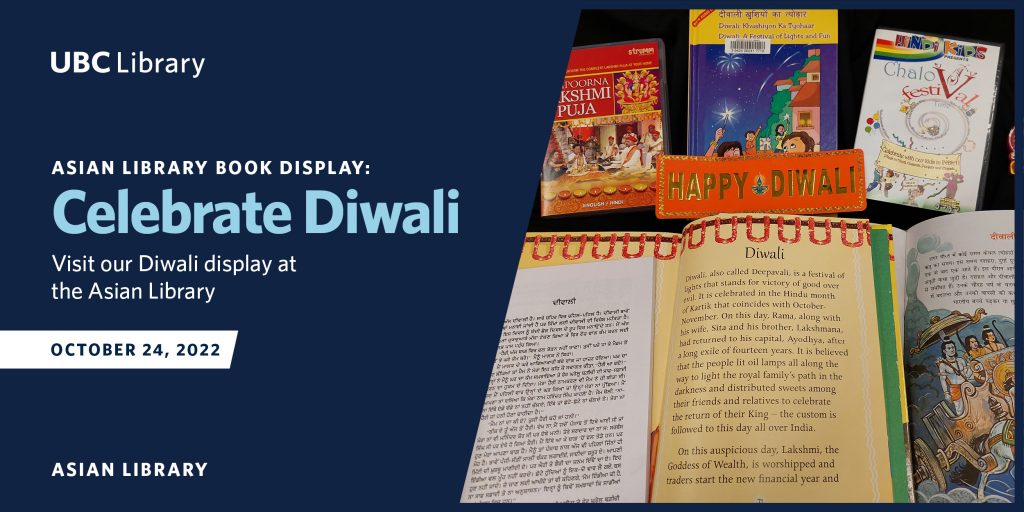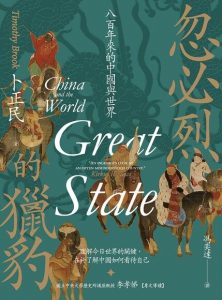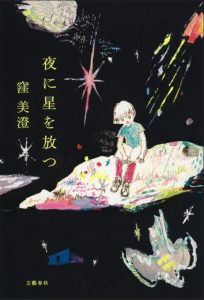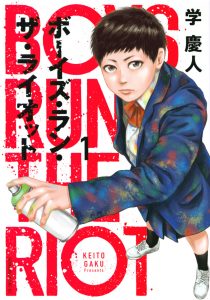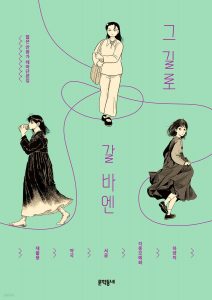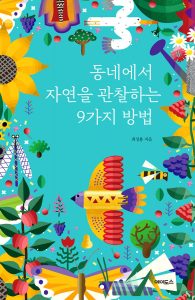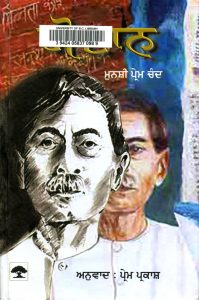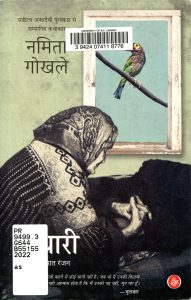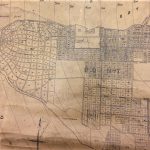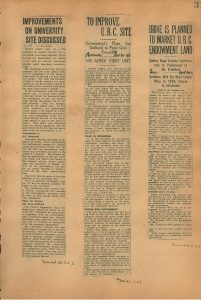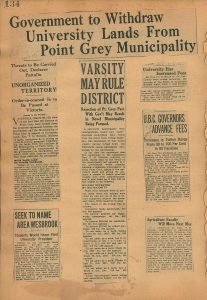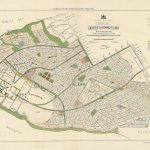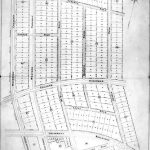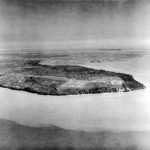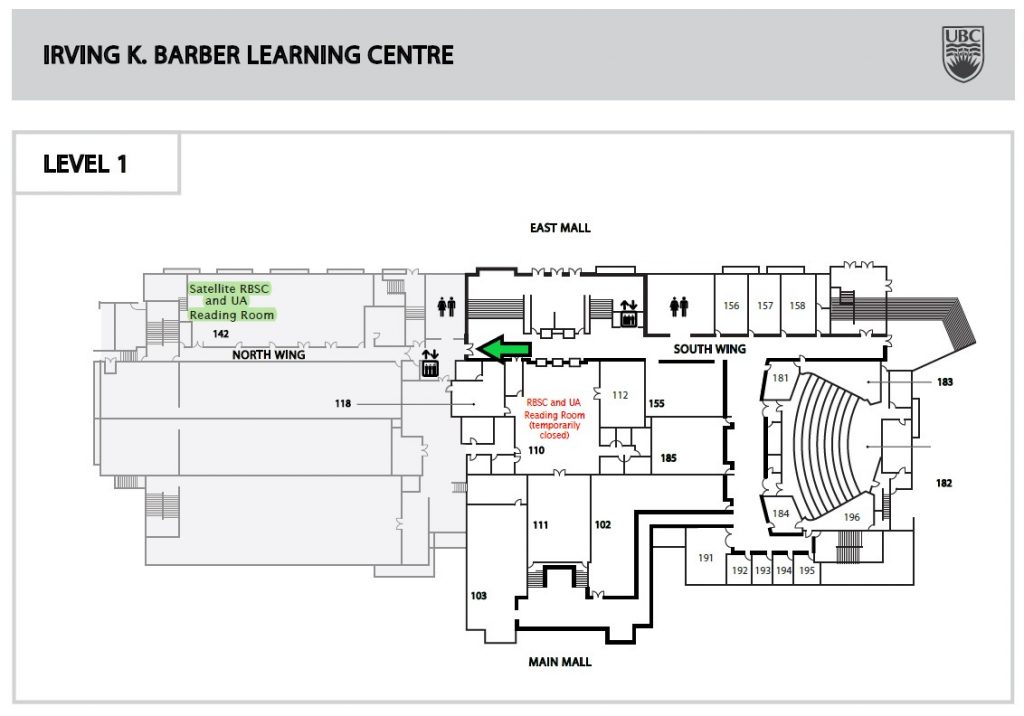International Women’s Day is Saturday, March 8, 2025 . Below are some recommended titles found at UBC Education Library to add to your reading list.
Click on the title to take you to the UBC Library catalogue record for the item.
Juvenile Literature: Collective Biographies
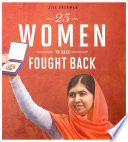 25 women who fought back
25 women who fought back
Jill Sherman
HQ1236 .S49 2019
Discover 25 women who challenged the status quo and fought for what they believed in.
From all corners of the world, these women show us that barriers are meant to be broken and obstacles can be overcome.
Learn about some of the fierce women who persevered in the face of adversity to fight for what they thought was right.
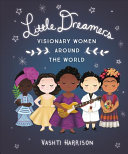 Little dreamers: visionary women around the world
Little dreamers: visionary women around the world
Vashti Harrison
CT3207 .H37 2018
“Brief, illustrated bios of women creators around the world”–
Featuring the true stories of women creators and thinkers from around the world, throughout history, this book shows that sometimes seeing things a little differently can lead to big changes.
Some names are well known, some are not, but all the women had a lasting effect on the fields they worked in. Whether they were breaking ground for innovative structures or breaking rules and creating new ones, the women profiled here not only made a place for themselves in the world but made the world a better place to live.

Version 1.0.0
She persisted around the world: 13 women who changed history
written by Chelsea Clinton; illustrated by Alexandra Boiger
HQ1123 .C56 2018
She Persisted Around the World is a book for everyone who has ever aimed high and been told to step down, for everyone who has ever raised their voice and been told to quiet down, and for everyone who has ever felt small, unimportant or unworthy.
Alexandra Boiger’s vibrant artwork accompanies this inspiring text that shows readers of all ages that, no matter what obstacles come their way, they have the power to persist and succeed.
This book features: Marie Curie, Sor Juana Ines de la Cruz, Viola Desmond, Sissi Lima do Amor, Leymah Gbowee, Caroline Herschel, Wangari Maathai, Aisha Rateb, J.K. Rowling, Kate Sheppard, Yuan Yuan Tan, Mary Verghese and Malala Yousafzai.
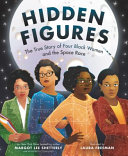 Hidden figures: the true story of four Black women and the space race
Hidden figures: the true story of four Black women and the space race
Margot Lee Shetterly with Winifred Conkling; illustrated by Laura Freeman
QA27.5 .S548 2018
Explores the previously uncelebrated but pivotal contributions of NASA’s African American women mathematicians to America’s space program, describing how Jim Crow laws segregated them despite their groundbreaking successes. Includes biographies on Dorothy Jackson Vaughan (1910-2008), Mary Winston Jackson (1921-2005), Katherine Colman Goble Johnson (1918- ), Dr. Christine Mann Darden (1942- ).
Katherine, Dorothy, Mary, and Christine were all good at math. Really good. And it was their understanding of numbers that helped them do what seemed impossible. They were women, and they were African-American, and they lived during a time when being black and a woman limited what they could do. But Katherine, Dorothy, Mary, and Christine were hardworking and persistent and, most important, smart. And that’s why NASA hired them to do the math that would one day send the United States into space for the very first time. New York Times bestselling author Margot Lee Shetterly and illustrator Laura Freeman bring to life the inspiring story of the struggles of these four “hidden figures” and what they overcame to succeed. The math work they did would change not only their own lives, but the face of air and space travel forever. — From dust jacket.
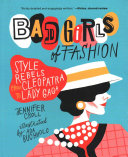 Bad girls of fashion: style rebels from Cleopatra to Lady Gaga
Bad girls of fashion: style rebels from Cleopatra to Lady Gaga
Jennifer Croll; illustrated by Ada Buchholc
GT1720 .C76 2016
The title says it all: Bad Girls of Fashion explores the lives of ten famous women who have used clothing to make a statement, change perceptions, break rules, attract power, or express their individuality. Included are Cleopatra, Marie Antoinette, Coco Chanel, Marlene Dietrich, Madonna, and Lady Gaga. Sidebar subjects include: Elizabeth I, Marilyn Monroe, Rihanna, and Vivienne Westwood.
Photos illuminate the text, while edgy, vividly coloured illustrations depict the subjects with interpretive flair. Readers will learn not only about changing fashion styles through history, but about changing historical attitudes toward women, and the links between fashion and art, film, music, politics, and feminism. With an energetic, appealing writing style, Croll demonstrates how through the ages, women — often without other means of power — have used fashion as a tool, and how their influence continues to shape how women present themselves today.
Juvenile Literature: Biographies
 Mary’s idea
Mary’s idea
Chris Raschka
ML3930.W545 R37 2023
“A picture book biography of Mary Lou Williams, an American jazz pianist and composer who wrote hundreds of compositions, recorded hundreds of songs, and wrote arrangements for Duke Ellington and Benny Goodman, and is an artist often overlooked in the canon of American music because of her gender and skin color”– Provided by publisher.
 Jovita wore pants: the story of a Mexican freedom fighter
Jovita wore pants: the story of a Mexican freedom fighter
by Aida Salazar; art by Molly Mendoza
ML3930.W545 R37 2023
“Jovita didn’t want to cook and clean like her sisters, and she especially didn’t want to wear the skirts her abuela gave her. She wanted to race her brothers and climb the tallest mesquite trees in Rancho Palos Blancos, ride horses, and wear pants! When her father and brothers joined the Cristeros War to fight for the right to practice religion, she wanted to help. She wasn’t allowed to fight, but that didn’t stop her from observing how her father strategized and familiarizing herself with the terrain. When tragedy struck, she did the only thing that felt right to her–cut her hair, donned a pair of pants, and continued the fight, commanding a battalion who followed her without question. Jovita Wore Pants is the story of a trailblazing revolutionary who fought for her freedom, told by her great niece, bestselling author Aida Salazar, and illustrated by Molly Mendoza”– Provided by publisher
 She kept dancing: the true story of a professional dancer with a limb difference
She kept dancing: the true story of a professional dancer with a limb difference
written by Sydney Mesher and Catherine Laudone; illustrated by Natelle Quek
GV1799.2 .M47 2023
“No two dances were the same. Each one was beautiful because it was different – just like how Sydney’s body was also beautiful because it was different. Sydney Mesher was born with ten toes and five fingers. But it was her toes that her mum noticed first. ‘I can tell she‘s going to be a dancer,’ she said. And it turned out Mum was right–after years of hard work, Sydney eventually danced her way onto the famous stage of Radio City Music Hall, becoming the first Rockette with a visible disability. This warm and inviting picture book…takes young readers along on Sydney’s journey–through the joyous ups as well as the crushing downs–and tells the story of how through it all, she kept dancing.”–Front cover flap.
 Maya Lin
Maya Lin
written by Grace Lin, interior illustrations by Gillian Flint
NA737.L48 L55 2022
“Presents a biography of Maya Lin, the creator of the Vietnam Veterans Memorial in Washington, D.C., shows how she overcame many obstacles to share her creations, which were always connected to surrounding landscapes and nature.
She has become an inspiration to many who are following in her footsteps and are following their creative dreams.”

The woman all spies fear: code breaker Elizebeth Smith Friedman and her hidden life
Amy Butler Greenfield
D639.C75 G74 2021
“Biography of Elizebeth Smith Friedman, an American woman who pioneered codebreaking in WWI and WWII but was only recently recognized for her extraordinary contributions to the field”– Provided by publisher.
Friedman had a rare talent for spotting patterns and solving puzzles, and these skills led her to become one of the top cryptanalysts in America during both World War I and World War II. In 1916 she had been hired by an eccentric millionaire to prove that Shakespeare’s plays had secret messages in them, and learned much about code breaking. Greenfield shows that Friedman and her husband, William, played a major role decoding messages during WWI and WWII, and also for the Coast Guard’s war against smugglers. — adapted from Amazon info
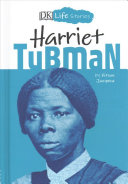 Harriet Tubman
Harriet Tubman
Kit Jazynka; illustrated by Charlotte Ager
E444.T82 J39 2019
“Born into slavery in c.1820, Harriet Tubman would later run away and help scores of other African American slaves escape to freedom in the North using the ‘Underground Railroad.’
A nurse, scout, and advisor during the American Civil War, Harriet co-led the Combahee River Raid, in which 700 slaves were liberated. After the war, Harriet became involved in women’s suffrage, or the right to vote, and opened a retirement home for sick and elderly African Americans. …
Learn all about Harriet Tubman’s fascinating life, the hardships she endured, her visions, the people she helped and rescued, the battles she fought, and how this American icon of justice and strength continues to inspire so many people today.”–Amazon.com
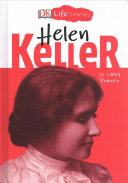 Helen Keller
Helen Keller
Libby Romero; illustrated by Charlotte Ager
HV1624.K4 R65 2019
In this kids’ biography, discover the inspiring story of Helen Keller, who overcame the odds by learning to understand and communicate with the world.
Helen Keller lost her sight and hearing due to an early childhood illness and spent the first six years of her life unable to interact with other people. She remained isolated from the outside world until Anne Sullivan came to work as her teacher.
In this biography for kids ages 8-12, learn all about Helen Keller’s amazing life and achievements–how she learned to read Braille and speak, go to college, write books, and ultimately revolutionize the world through her activism on behalf of the deaf and blind.
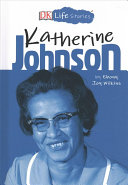 Katherine Johnson
Katherine Johnson
Ebony Joy Wilkins; illustrated by Charlotte Ager
QA29.J64 W55 2019
In this kids’ biography, discover the inspiring story of Katherine Johnson, famed NASA mathematician and one of the subjects of the best-selling book and movie Hidden Figures.
It was an incredible accomplishment when the United States first put a person on the moon–but without the incredible behind-the-scenes work of NASA mathematician Katherine Johnson, such a feat could not have been possible.
In this biography for kids ages 8-12, follow Katherine’s remarkable journey from growing up in West Virginia, to becoming a teacher, to breaking barriers at NASA and receiving the Presidential Medal of Freedom in 2015.
Juvenile Literature
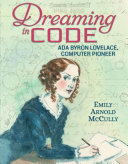 Dreaming in code: Ada Byron Lovelace, computer pioneer
Dreaming in code: Ada Byron Lovelace, computer pioneer
Emily Arnold McCully
QA29.L72 M33 2019
“Even by 1800s standards, Ada Byron Lovelace had an unusual upbringing. Her narcissistic mother worked hard at cultivating her own role as martyred ex-wife of bad-boy poet Lord Byron and had Ada tutored at home by some of the brightest minds. Ada developed a hunger for mental puzzles, mathematical conundrums, and scientific discovery that kept pace with the breathtaking advances of the industrial and social revolutions taking place in Europe. At seventeen, Ada met inventor Charles Babbage. In spite of the difference of their years, they were kindred spirits and intellects. Their ensuing collaborations would ultimately result in ideas that presaged computer programming by a century. Ada Lovelace is today recognized and celebrated as a pioneer and a prophet of the information age.”–Page 2 of cover.
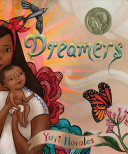 Dreamers
Dreamers
Yuyi Morales
PS3613.O68 Z46 2018
“An illustrated picture book autobiography in which award-winning author Yuyi Morales tells her own immigration story”–Provided by publisher.
“What if you dreamed of a new life, and it came to you?
What if that new life led you to a new country, where no one spoke your language, where you felt alone and ignored?
What if you had to make that new place your home?
What if you found that home in a world of books? And what if it all were true?”–Jacket.
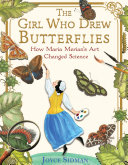 The girl who drew butterflies: how Maria Merian’s art changed science
The girl who drew butterflies: how Maria Merian’s art changed science
Joyce Sidman
QL31.M53 S53 2018
Bugs, of all kinds, were considered to be “born of mud” and to be “beasts of the devil.” Why would anyone, let alone a girl, want to study and observe them?
One of the first naturalists to observe live insects directly, Maria Sibylla Merian was also one of the first to document the metamorphosis of the butterfly.
In this visual nonfiction biography, richly illustrated throughout with full-color original paintings by Merian herself, the Newbery Honor-winning author Joyce Sidman paints her own picture of one of the first female entomologists and a woman who flouted convention in the pursuit of knowledge and her passion for insects.
 Mary who wrote Frankenstein
Mary who wrote Frankenstein
Linda Bailey; illustrated by Júlia Sardà
PZ4.9.B2196 Mr 2018
How does a story begin? Sometimes it begins with a dream, and a dreamer. Mary is one such dreamer, a little girl who learns to read by tracing the letters on the tombstone of her famous feminist mother, Mary Wollstonecraft, and whose only escape from her strict father and overbearing stepmother is through the stories she reads and imagines. Unhappy at home, she seeks independence, and at the age of sixteen runs away with poet Percy Bysshe Shelley, another dreamer. Two years later, they travel to Switzerland where they meet a famous poet, Lord Byron. On a stormy summer evening, with five young people gathered around a fire, Byron suggests a contest to see who can create the best ghost story. Mary has a waking dream about a monster come to life. A year and a half later, Mary Shelley’s terrifying tale, Frankenstein: or, the Modern Prometheus, is published — a novel that goes on to become the most enduring monster story ever and one of the most popular legends of all time. A riveting and atmospheric picture book about the young woman who wrote one of the greatest horror novels ever written and one of the first works of science fiction, Mary Who Wrote Frankenstein is an exploration of the process of artistic inspiration that will galvanize readers and writers of all ages.
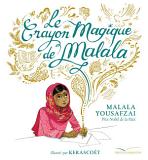 Le crayon magique de Malala
Le crayon magique de Malala
Malala Yousafzai, Prix Nobel de la paix ; illustrépar Kerascoët ;
adaptation française, Sophie Koechlin
LC2330 .Y682514 2017 French Collection
Au coeur du Pakistan, une toute jeune fille prénomée Malala rêve d’avoir un crayon magique qu’elle utiliserait pour… fermer la porte de sa chambre à clef et éviter que ses frères ne viennent l’embêter, arrêter le temps pour dormir une heure de plus tous les matins, effacer l’odeur des poubelles devant chez elle… Mais plus elle grandit, plus ses rêves évoluent. Car c’est avec un vrai stylo qu’on peut changer le monde : en apprenant à tous à lire et à écrire.”J’ai compris ce jour que si j’avais un crayon magique, je m’en servirais pour dessiner un nouveau monde, un monde de paix, sans guerre, pauvreté ou famine. Un monde où les garçons et les filles seraient égaux.”Plutôt que rêver seule dans sa chambre, Malala raconte son histoire et devient porte-parole et militante du droit des femmes (source : site de l’éditeur)
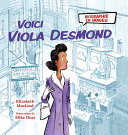 Voici Viola Desmond
Voici Viola Desmond
Elizabeth MacLeod;
illustrations de Mike Deas; texte français de Louise Binette
FC2346.26 .D48 M3414 2018 French Collection
“Biographie de Viola Irene Desmond, femme d’affaires canadienne noire de la Nouvelle-Écosse qui a contesté la ségrégation raciale dans une salle de cinéma à New Glasgow, en Nouvelle-Écosse, en 1946.” —
“Biography of Viola Irene Desmond, Canadian Black Nova Scotian businesswoman who challenged racial segregation at a movie theatre in New Glasgow, Nova Scotia, in 1946.” —
 The world is not a rectangle: a portrait of architect Zaha Hadid
The world is not a rectangle: a portrait of architect Zaha Hadid
Jeanette Winter
NA1469.H33 W56 2017
Get to know Zaha Hadid in this nonfiction picture book about the famed architect’s life and her triumph over adversity from celebrated author-illustrator Jeanette Winter.
Zaha Hadid grew up in Baghdad, Iraq, and dreamed of designing her own cities.
After studying architecture in London, she opened her own studio and started designing buildings. But as a Muslim woman, Hadid faced many obstacles.
Determined to succeed, she worked hard for many years, and achieved her goals—and now you can see the buildings Hadid has designed all over the world.
 The youngest marcher: the story of Audrey Faye Hendricks, a young civil rights activist
The youngest marcher: the story of Audrey Faye Hendricks, a young civil rights activist
Cynthia Levinson; illustrated by Vanessa Brantley Newton
F334.B653 H465 2017
Meet the youngest known child to be arrested for a civil rights protest in Birmingham, Alabama, 1963, in this picture book that proves you’re never too little to make a difference. Nine-year-old Audrey Faye Hendricks intended to go places and do things like anybody else. So when she heard grown-ups talk about wiping out Birmingham’s segregation laws, she spoke up. As she listened to the preacher’s words, smooth as glass, she sat up tall. And when she heard the plan — picket those white stores! March to protest those unfair laws! Fill the jails! — she stepped right up and said, I’ll do it! She was going to j-a-a-il!
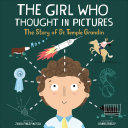 The girl who thought in pictures: the story of Dr. Temple Grandin
The girl who thought in pictures: the story of Dr. Temple Grandin
Julia Finley Mosca; illustrated by Daniel Rieley
SF33.G67 M67 2017
If you’ve ever felt different, if you’ve ever been low, if you don’t quite fit in, there’s a name you should know… Meet Dr. Temple Grandin–one of the world’s quirkiest science heroes! When young Temple was diagnosed with autism, no one expected her to talk, let alone become one of the most powerful voices in modern science. Yet, the determined visual thinker did just that. Her unique mind allowed her to connect with animals in a special way, helping her invent groundbreaking improvements for farms around the globe! The Girl Who Thought in Pictures: The Story of Dr. Temple Grandin is the first book in a brand new educational series about the inspirational lives of amazing scientists. In addition to the illustrated rhyming tale, you’ll find a complete biography, fun facts, a colourful timeline of events, and even a note from Temple herself!
